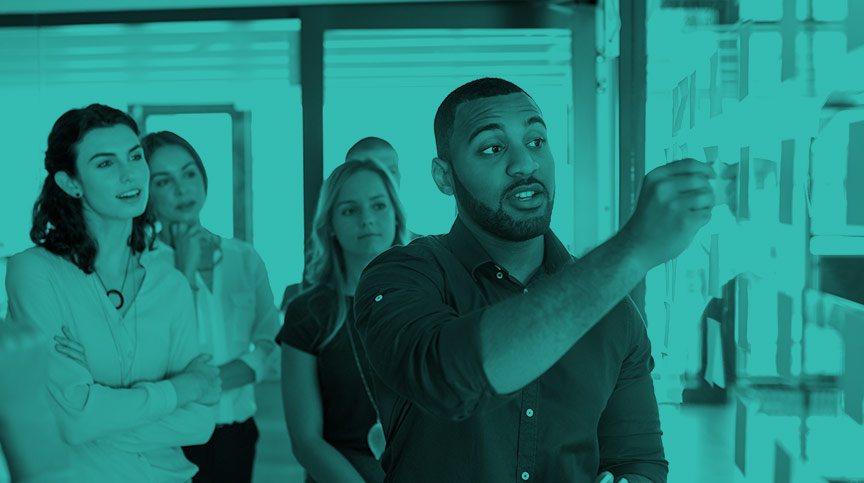Contrary to Conventional Wisdom, Cultures Can Be Transformed
Today’s companies have no choice but to change.
The world is moving and shifting fast, and executives know it.
Organizations seeking to adapt during turbulent times — like now — can’t force change through purely technical approaches such as restructuring and reengineering. They need a new kind of leadership capability to reframe dilemmas, reinterpret options, and reform operations — and to do so continuously.
But organizational culture change isn’t for the faint of heart or the quick-change artist. The history of change management teaches us that a simple recipe does not work. Transforming your organization remains very difficult, and serious change demands serious people.
Our experience with clients has helped us identify themes and patterns, tools and models that help leaders and organizations to transform their cultures. But the fact remains: anyone touting a quick-fix transformation formula doesn’t know what they’re up against.
Transforming Your Organization Isn’t Simple, But It’s Important
5 Guidelines for Transforming Company Culture
As we note in our white paper, it isn’t easy to lead organizational change or transform your organization because:
1. Bigger minds are needed to keep pace with rapidly changing reality.
Reality is leaping ahead of our collective development. We need new thinking and new ways of working together in order to keep up. Most organizations are behind in developing what they need to move up the hierarchy of culture. It takes an even greater stretch to thrive in the face of change.
2. Transforming your organization requires new mindsets, not just new skills.
Organizations have become savvy developers of individual leader competencies. In doing so, they have over-relied on the human resource function to manage change through individual skill development. Executives may not have considered the need to advance both individual and collective leadership mindsets. Vertical development can help build skills for individual leaders and elevate the organization’s culture.
3. Hidden assumptions and beliefs must be unearthed.
Unexamined beliefs control an organization and prevent any meaningful change. Years of valuing hierarchy, status, authority, and control — even if unstated — can lead to assumptions and behaviors that are out of date, unnecessary, unhelpful, and at odds with stated goals and strategic direction. Organizations must unlearn to transform and change workplace culture.
4. Organizational change requires leaders to change.
To transform your organization and its culture, you must also change yourself. That’s the new reality. Senior executives who move the needle toward organizational transformation also experience significant personal transformation. That commitment to personal change is a fundamental part of their readiness to take on the leadership and management challenges of change for a sustainable future.
5. Transforming your organization takes hard work, so don’t call what’s required merely “soft” skills.
Developing new beliefs and mindsets isn’t easy, and the leadership practices they generate will permanently alter the way leadership is experienced and accomplished. Soft skill development and developing a new mindset is much more difficult than managing spreadsheets and planning the next restructuring. If it were easy, everyone would be doing it.
Senior leadership teams can and do evolve new mindsets. Individuals, teams, and entire organizations adapt, grow, and prepare for future challenges. They learn to change what they do and how they do it. As a result, they have grown “bigger minds for solving bigger problems.”
Choosing the right leadership culture is the difference between success or failure in transforming your organization.
As companies face change, they need to invest intentionally in a leadership culture that will match the unfolding challenge. The beliefs that drive leadership behaviors need to align with the operational business strategy.
The goal of culture-change work and the key to transforming your organization is to purposefully and actively build capability for new ways of working.
As business strategies get more complex, the culture is required to grow into the level of complexity required to implement it. Most workplace leaders — and most leadership development practitioners and theorists — don’t have “transforming organizational culture” on their to-do list. And for those who see the need, they don’t know where to start.
Transforming Company Culture? Start By Growing Bigger Minds
At CCL, we start by describing a hierarchy of leadership culture: dependent, independent, and interdependent. Organizations, like people, tend to evolve in maturity, along a path from dependent to independent to interdependent. Each of the 3 levels of leadership culture in the hierarchy is characterized by a set of beliefs, behaviors, and practices.
By choosing the right level of leadership culture that your organization requires for its future, your leadership talent as a collective can start transforming your organization and advancing to new levels of capability that secures success. When the level of leadership culture aligns with your business strategy, your performance will be stellar.
More and more executives tell us they need increasingly collaborative leadership for working effectively across boundaries inside their organizations and across their value chains. In fact, our executive research shows that it’s their highest need and yet their least effective organizational capability.
Of course, culture change isn’t a short-term process — it will take a few years. An organization doesn’t become a more collaborative culture, for example, just because it’s desired or when new competencies are named.
6 Strategies to Start Transforming Your Organization And Its Culture
Here are 6 strategies to help you and your team rise above current beliefs and practices, grow bigger minds, and build capacity for new ways of working while transforming your organization:
1. Discover your culture and capabilities.
Get a deep and clear-eyed view of your current culture. Is your organization primarily dependent or independent? Does it have elements of successful interdependence from which you can expand? Even more important — what’s the culture of your executive leadership team?
2. Craft a leadership strategy.
A leadership strategy is an organization’s implicit and explicit choices about leadership, its beliefs and practices, and its people systems. It’s the blueprint for building the leadership capacity to meet operational objectives. Learn more about how to craft a leadership strategy.
3. Transform the executive team.
When transforming company culture, you have to transform the executive team first. The days of delegating change are over. To change the culture — start with changing yourself. Are you getting the best from your executive team? Jump-start the change work behind closed doors with just the senior team. Coach senior team members (both individually and as a group) to develop their readiness for leading culture change. Focus on topics of control, time, and engagement.
4. Take time out for learning.
Allow for routine breaks or in-the-moment discussions to stop and learn. Slow down and take a deeper look at the situation. Reflect on assumptions, understand problems more clearly, and integrate multiple perspectives.
5. Establish action-development teams.
Teams of senior and high-potential leaders tackle mission-critical, complex challenges identified by the business strategy. They learn to work while spanning boundaries, with explicit sponsorship and coaching, while developing new and better ways of working together.
6. Align talent processes.
Hire for the organization you want to become, not for the one you used to be. Look for people who want to be part of something larger than themselves, have strong collaborative mindsets, and are able to have conversations about culture and leaders.
A Final Word on Transforming Company Culture
Do you have the leadership capacity and culture needed to succeed while transforming your organization? Where are the individual and collective gaps? Again, vertical development can help you build the culture you need for the strategy you’ve set.
Whatever you do, don’t pawn the culture work off on someone else. Don’t give it to HR, either. No one else can create change for the executive team. No proxy can carry the senior team’s responsibility.
Rather than dismissing culture work as “soft stuff,” many executives now view it as the high-priority, hard stuff — changing whole belief systems so that organizations can survive. Are you ready for the new hard work?
Ready to Take the Next Step?
If you and the rest of the senior leadership team are ready to start transforming your organization, partner with the experts in our Organizational Leadership practice to assess the effectiveness of the executive team, evaluate your current and needed future leadership culture, and ensure it supports your business strategy and priorities.









